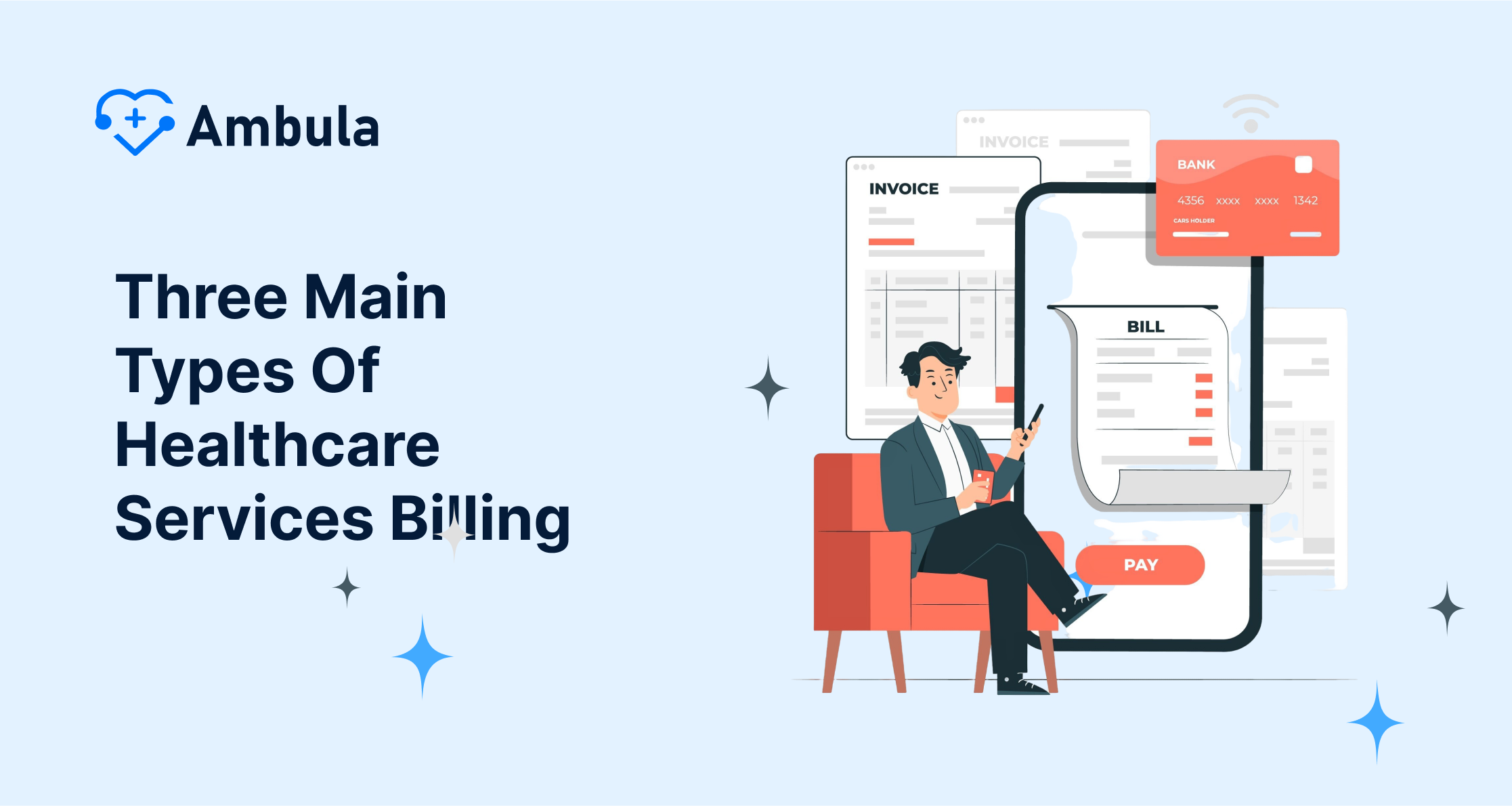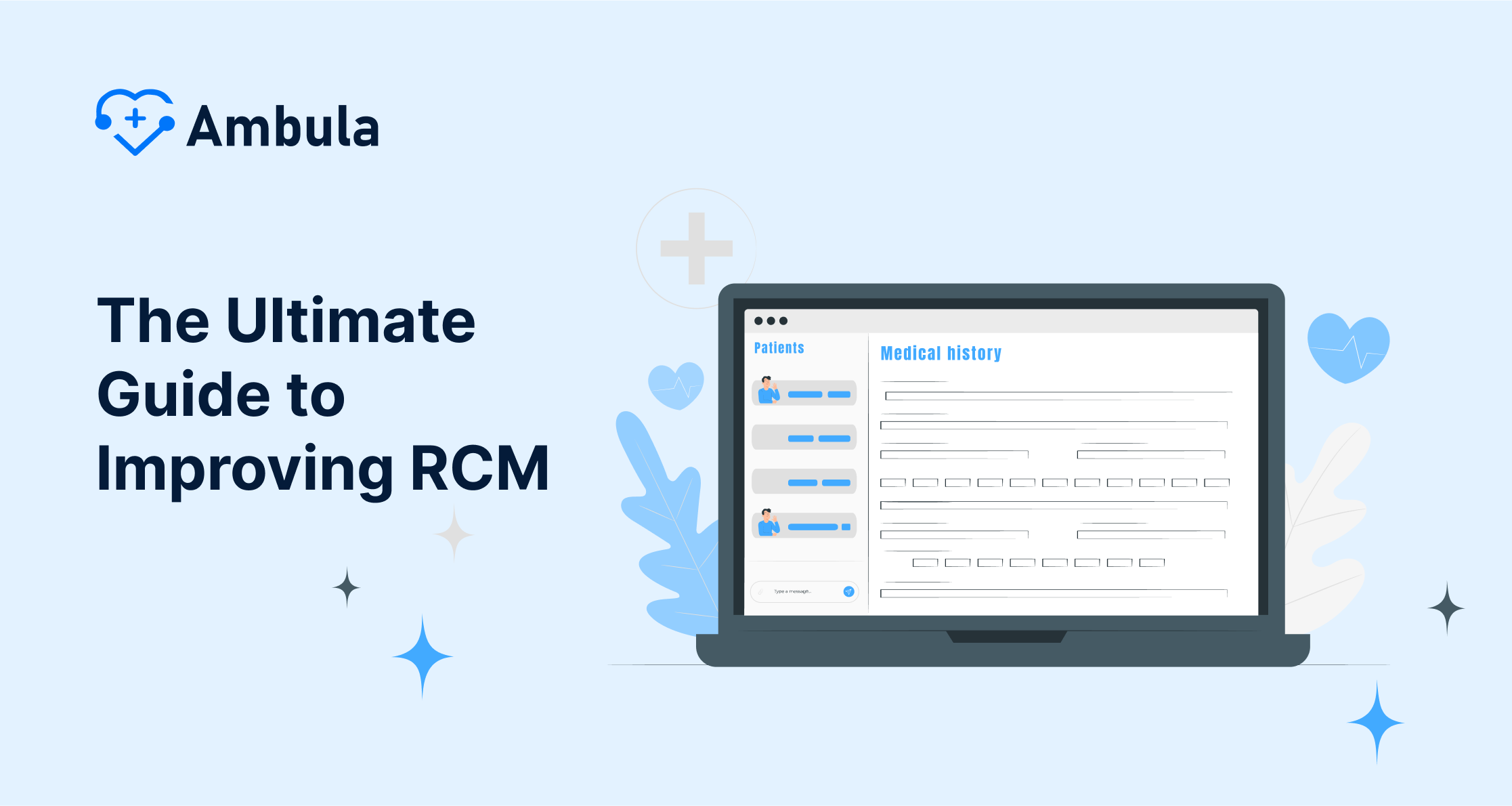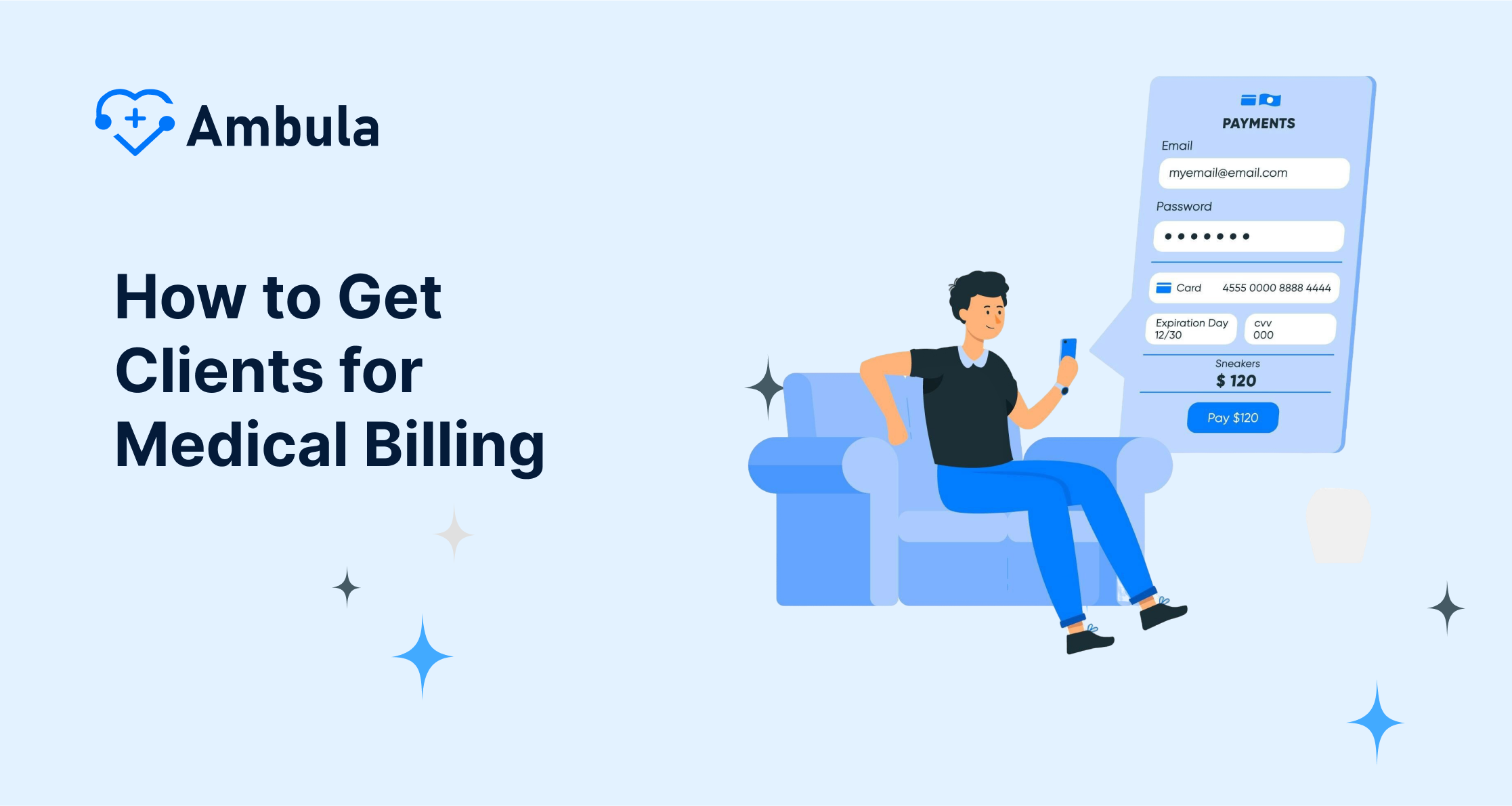
Solid medical billing methods are super important for keeping doctor’s offices healthy. Dealing with the tricky parts of healthcare billing and all the new rules and things insurance companies need means doctors gotta get good at handling their billing. Getting the most money through smart billing makes sure the money keeps flowing, and it lets doctors concentrate on taking care of their patients.
This write-up dives into the best medical billing methods to assist healthcare providers in boosting their revenue cycle management game. It covers simplifying the gathering of patient info, bettering the precision of coding, and fine-tuning the claims submission game plan. Plus, we’re chatting about putting top-notch denial management moves into play and why it’s key to keep pace with what’s going down in the industry. When healthcare pros put these tactics to work, they can pump up their financial health while playing by the rules and making sure patients are happy.
Simplify Collecting Patient Details
Nailing patient detail collection is mega important for killer medical billing methods. By making this smoother, healthcare providers can give their revenue cycle management a leg up and step up how the place runs.
Roll Out Digital Intake Forms
The shift to digital methods in healthcare is on the rise, and it’s super critical to make this change right. Ditching paper for digital intake forms rocks because it’s way more accurate, and you don’t have to deal with tons of paperwork. If you wanna roll out these digital forms like a boss, here’s what you gotta do:
- Pick software that vibes with your clinic’s needs and is cool with HIPAA rules.
- Do a security check-up to spot any weak spots and lock down patient info tight.
- Make those forms slick for gathering info without losing the easy peasy factor.
- Show your team the ropes, so they’re all about secure savvy form use.
- Make sure these digital gems fit into the daily grind without hiccups.
- Put the brakes on who gets in and keep tabs on the digital tracks to stay in the clear with the rules.
Stick to these pointers, and you’ll nail the digital transformation with style!
Digital intake papers make the whole routine from collecting info to saving and finding it super smooth. Patients can fill out their forms on the internet before they show up. This slashes the time they have to wait and stops jams at the check-in counter. Staff saves heaps of time with this method, and it also keeps the data more correct because you’re not trying to figure out people’s scribbles and punching numbers in by hand.
Make Sure Insurance Is Good to Go on the Spot
It’s key to check if insurance is gonna cover stuff right away. That way, healthcare places can rake in the cash and not stress over tossed-out claims. They gotta have a solid routine sorted out for scooping up all the gotta-know stuff 1 to 3 days before someone’s due in. This routine’s gotta cover:
- Gathering people’s insurance and personal data.
- Checking insurance plans for what they cover and what’s off-limits.
- Looking up if you need special permission or a doctor’s referral.
- Figuring out what patients need to pay, like sharing the cost or paying upfront.
It’s super vital to make check if insurance is good to go soon as possible so any mess-ups can get fixed before the person comes in. Every time someone shows up, you gotta ask for their insurance card, because lots of folks— like a whole third of them—might switch jobs every year. And yeah, that could mess with their insurance stuff.
Make sure your team is top-notch at putting in data
Training employees right is super important to keep data correct and top-notch. Hospitals and such need to beef up on teaching digital smarts and get their teams to own their data. So, what’s on the to-do list for training the squad?
- Getting why getting the numbers right matters a ton for taking care of folks and handling the bills.
- Getting good at checking if data’s legit and making it squeaky clean.
- Knowing how to use gadgets and software for recording info.
- Getting the hang of all those uniform terms, funky codes, and short forms.
Putting in strict checks and steps to confirm stuff can make a big difference in how good the data is. The program for dealing with data should tackle records that match certain rules and need to point out any mistakes or odd stuff 4. This method makes sure healthcare workers stay clear of super bad errors and get the treatments sorted just in time.
When you focus on the important bits – like getting those digital forms filled out making sure insurance stuff is checked right then and there, and teaching the team to put data in without messing it up – healthcare folks can get their patient info sorted way smoother. This leads to getting money matters handled better fewer times when claims get kicked back and just a whole better way of running the show.
Make Sure Coding Is on Point
Healthcare providers must nail the medical coding to get the right payment and stick to the rules. This thing has a big pull on how they handle their money and keep their clinic’s finances healthy. To get their coding spot-on, doctors and hospitals should work on these moves:
Keep Up with Coding Rules
Knowing all the new rules and coding instructions is super important to keep things precise. Here’s how healthcare pros can stay sharp:
- Check out the CMS online guide. It’s got the latest rules, advice, blueprints, and orders for medical bills. It keeps doctors in line with the law and helps them do a better job at sending out precise medical invoices.
- Get involved with expert groups. Places like The AAPC and AHIMA have awesome stuff for their crew, like news on rules shifting and strategy. These outfits can get you clued up about fresh stuff happening at work.
- Stay on top of tech updates. New gizmos in the health world can change how people get treated and how the billing codes work. Knowing all about this tech stuff is super important to keep your billing game strong and play by the rules.
Make Regular Checks on Coding Accuracy
Coding audits are vital for managing healthcare revenue streams. They spot issues in coding methods, cut down on mistakes, and boost output. Now, let’s dive into some essential aspects of rolling out coding audits.
- Why we do coding checks: Checking codes helps spot old codes, wrong modifiers, bad code choices, and errors in how we bill for medical stuff. They give doctors a way to measure how well they’re doing with codes and keep everything legal.
- Good stuff from checking often:
-
- Makes stuff work smoother and brings in more cash
- Cuts out mistakes with codes and fewer no’s from insurance
- Figure out why we got no’s before and try to get the money
- Better money flow with the right codes and papers
- How to do a coding check: Looking over the codes means making sure diagnosis codes and the steps we pick to do stuff are solid. Gotta go through medical files and what we sent to the folks who pay, the insurance companies.
- Healthcare providers decide between checking things themselves or teaming up with outside firms handling medical codes for outside checks. Outsiders checking the books could spot stuff that the insiders might overlook.
- How to do your own checking:
-
- Pick what you wanna look at closely
- Choose enough examples to check (10-20 examples for each doc is solid)
- Look at the medical records and check if the codes are right
- Let everyone know what you found and teach them what’s up
- Check again later to make sure things are getting better
Pick Out Medical Billing Software
Going for medical billing software can help to get coding spot-on and make healthcare billing way smoother. When picking out your coding software, think about these bits:
- Stick to HIPAA rules: Make sure your software sticks to the rules of the Health Insurance Portability and Accountability Act.
- Up-to-date coding and safe data: Hunt for software that has the latest coding scoop and solid protection for your data.
- Loads of security stuff: Choose options with a bunch of security features, like needing two proofs to get in (2FA).
- Managing claims and making more money: Go for software that’s got everything you need to handle claims and boost your cash flow.
- Regular saving of your data and help when you need it: Confirm that your software keeps saving your data and gives you help when things get tricky.
Keeping up with coding rules having audits often, and using coding programs gives healthcare workers a big boost in getting their coding right. Better cash flow management fewer rejected claims, and healthier money stuff at the doctor’s offices come from this improvement.
Enhance Claims Submission Process
Improving the claims submission process is crucial for healthcare providers to maximize revenue and streamline their billing operations. By implementing effective strategies, providers can reduce claim denials, accelerate reimbursements, and enhance overall financial performance.
Implement a Claims Scrubbing System
Claims scrubbing is an essential process in medical billing that involves reviewing and validating healthcare claims before submission to insurance payers. This proactive approach helps identify and rectify errors, inconsistencies, or missing information that could lead to claim denials or payment delays.
To implement an effective claims-scrubbing system, healthcare providers should consider the following steps:
- Invest in advanced claims scrubbing software that utilizes automated algorithms to detect errors and inconsistencies.
- Ensure the software complies with HIPAA regulations and offers robust data protection measures.
- Train staff on using the claims scrubbing system effectively.
- Regularly update the software to stay current with changing payer requirements and coding guidelines.
By implementing a claims scrubbing system, healthcare providers can enjoy several benefits:
- Error prevention
- Increased efficiency
- Compliance with payer rules
- Reduced claim denials
- Financial optimization
- Regulatory compliance
Monitor Clean Claims Rate
The Clean Claims Rate is a key metric in healthcare revenue cycle management that measures the percentage of claims processed without errors or rejections. A high Clean Claims Rate indicates efficient billing and coding processes, leading to faster reimbursement and improved cash flow.
To calculate the Clean Claims Rate, use the following formula:
Clean Claims Rate = (Number of clean claims / Total number of claims submitted) x 100
The industry standard benchmark for Clean Claims Rate is 95%. Healthcare organizations should aim to meet or exceed this benchmark to maximize revenue and minimize claims processing costs.
To improve the Clean Claims Rate, healthcare providers can:
- Ensure accurate and up-to-date patient information
- Submit claims in a timely manner
- Code claims correctly and accurately
- Establish effective communication channels between stakeholders
- Conduct regular audits of the revenue cycle management process
Set Up Electronic Claims Submission
Electronic Data Interchange (EDI) is an efficient method for submitting claims to Medicare Administrative Contractors (MACs) and other payers. To transition from paper to electronic claims submission, healthcare providers should follow these steps:
- Evaluate current office methods of paper claims submission.
- If using computer-generated paper claims, contact the software vendor to explore electronic capabilities.
- Consider using Medicare’s free electronic claim submission software, PC-ACE, if needed.
- Complete the necessary enrollment forms:
- EDI SPOT Enrollment Form for Provider Offices
- Electronic Data Interchange (EDI) enrollment form
Once set up, providers can take advantage of additional electronic applications, such as:
- Initial Acknowledgement (999)
- Electronic receipt of claim submission Health Care Claim Acknowledgement (277CA)
- Electronic remittance advice (ERA) (835)
- Electronic claim status (ECS) (276/277)
By implementing these strategies – claims scrubbing, monitoring Clean Claims Rate, and setting up electronic claims submission – healthcare providers can significantly enhance their claims submission process, leading to improved revenue cycle management and financial performance.
Implement Effective Denial Management
Effective denial management is crucial for healthcare providers to maximize revenue and maintain a healthy financial status. By implementing strategic approaches, providers can significantly reduce the impact of claim denials on their bottom line.
Analyze Denial Patterns
To address claim denials effectively, healthcare professionals must understand common denial types and identify patterns. This involves collecting data on facilities, providers, payers, and procedures that frequently lead to denials 13. By conducting a thorough root-cause analysis, providers can pinpoint issues such as coding errors, missing data, late submissions, out-of-network care, lack of prior authorization, or insufficient medical necessity documentation 13.
Analyzing denial patterns allows providers to:
- Identify systemic revenue cycle trends
- Investigate high-volume and high-dollar denials
- Focus on problematic areas such as outpatient denials, labs, and inpatient-to-OBS downgrades 14
Create a Dedicated Denial Management Team
Establishing a dedicated team for denial management is essential for effective prevention and resolution. This team should include experts from various departments, such as admitting/registration, case management, patient financial services, nursing, health information management, IT, finance, compliance, and physicians.
The denial management team’s responsibilities include:
- Investigating first-pass data to identify top denial causes
- Implementing workflow improvements and education
- Tracking interventions to ensure sustainable improvements
- Collaborating with managed care contracting teams to resolve payer-related issues
Develop Appeal Templates
Creating standardized appeal templates can streamline the denial management process and increase the chances of successful appeals. When developing appeal templates, consider the following:
- Include appropriate medical records and supporting documentation
- Provide articles, images, or letters from providers to support the reason for the service
- Tailor templates to address specific denial reasons and payer requirements
It’s important to note that while 67% of denied claims can be recovered, 65% are never resubmitted. By developing effective appeal templates and processes, healthcare providers can significantly improve their denial recovery rates.
Implementing these strategies can help healthcare providers reduce the financial impact of claim denials. According to a recent survey, the average cost to appeal a denial is $43.84, with providers conducting an average of three review rounds with payers to ultimately get paid for initial claim denials. By focusing on prevention and efficient management, providers can minimize these costs and improve their overall revenue cycle performance.
Conclusion
The strategies discussed in this article have a significant impact on the financial health of healthcare providers. By focusing on streamlining patient data collection, improving coding accuracy, enhancing claims submission, and implementing effective denial management, providers can boost their revenue cycle management. These approaches not only help to maximize revenue but also contribute to improved operational efficiency and patient satisfaction.
To wrap up, the healthcare billing landscape is always changing, and staying ahead of the curve is crucial to succeed. Providers who apply these strategies and keep adapting to new trends are better positioned to thrive financially. This allows them to focus more on their primary goal: delivering top-notch patient care. By continuously refining their billing processes, healthcare providers can ensure a healthy bottom line while maintaining their commitment to quality healthcare.
FAQs
How can medical practices enhance their billing to increase revenue?
To boost revenue through medical billing, practices can establish a robust collections process, manage claims efficiently, minimize coding errors, swiftly address denied or rejected claims, continually seek improvements, and consider outsourcing their billing processes.
What are some effective strategies to maximize medical billing efficiency?
Key strategies include verifying patient information thoroughly, setting clear payment terms for patients, ensuring claims are complete, double-checking all coding, managing rejected and denied claims effectively, utilizing medical software platforms, and staying updated with industry changes.
What actions should healthcare providers take to maximize their reimbursements?
Healthcare providers should focus on establishing a solid process, updating their fee schedules, ensuring accurate coding, managing claims effectively, handling denied or rejected claims promptly, tracking performance metrics, considering outsourcing, and increasing patient flow to maximize reimbursements.
Which phase is crucial in the healthcare billing revenue cycle?
Patient registration is crucial as it initiates the revenue cycle. Accurate patient registration is vital for ensuring that billing and insurance claims are correct, which facilitates timely payments.






